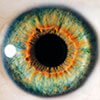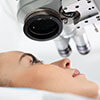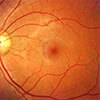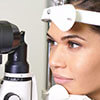Cataract Surgery
Cataract Surgery
Surgery is the Most Common Cataract Treatment
A precise and technically demanding procedure, cataract surgery is microsurgery, which means that it is performed under a high-powered operating microscope.
This surgery is one of the most commonly performed surgical procedures in this country, and also one of the most successful procedures. Cataract surgery takes less than 30 minutes, and is performed as an outpatient procedure, which means that you do not have to stay in the hospital overnight. Patients commonly report minimal to no postoperative discomfort and leave the surgical facility in about two hours.
Before surgery, the eye is numbed so patients don’t feel pain. At the start of surgery, your surgeon makes a small incision in the eye. Then, your surgeon uses ultrasound to remove the cloudy lens of the eye, and this is also painless. Afterward, the cloudy lens is replaced with a clear lens implant, called an intraocular lens, or IOL.
Read more about the cataract surgery procedure.
Care for the Eye After Surgery
Follow-up visits may be performed by your family eye doctor or by our doctors. Visits take place one day, one week, and one month following cataract surgery. You can resume most activities 2-7 days after surgery.
You will take eye drops for up to four weeks after surgery, to control inflammation and reduce the risk of infection. When you complete your care with Northwest Eye Surgeons, you may continue care with your family eye doctor, who can make any necessary adjustment to your glasses prescription.
Cataract Surgery Procedure
Surgery Using Plastic Lens Clears Cloudy Vision
During the cataract surgery, your doctor will first numb the eye with topical anesthetic drops. Sometimes an anesthetic injection is required. The surgeon uses an ultrasonic instrument to emulsify the cataract into very small liquified pieces which can be removed from the eye with suction. This technique is called phacoemulsification and is typically performed through an incision of approximately 1/10th of an inch. Computer-guided femtosecond laser technology is sometimes used to supplement the ultrasound technique, especially when the patient has an interest in Vision Correction for decreased need for glasses after surgery, or when the cataract is extremely advanced and dense. When the cataract is very advanced and dense, the laser may provide for a safer procedure and a quicker recovery of vision.
When a patient is interested in Vision Correction for decreased need for glasses after surgery, the laser can help provide more precise vision outcomes.
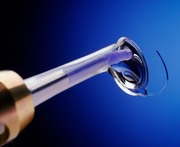
Foldable plastic lens keeps incision small
When the cataract has been removed, your doctor will implant a new lens into your eye. This new lens is made of a plastic-like material. Usually a foldable lens is used so that the initial incision does not have to be enlarged.
The advantage of keeping the incision small is a more rapid healing time and a quicker recovery from the procedure. Once placed into the eye, the lens is unfolded and placed in proper position.
Frequently, no stitches are needed to close the incision in the cornea. Your doctor will place a shield or protective glasses over the operated eye before you go home.
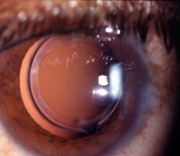
Get back to normal pretty quickly
In most cases, you can resume normal activity as early as the next day. Drops will be prescribed to prevent infection and inflammation in the eye, and your doctor will give you detailed instructions regarding postoperative follow-up examinations.



